Piers Johnson presents on interference testing and horizontal wells at the Welltesting Network meeting in Norway
Piers Johnson, Managing Director of OPC, presented 2 papers at the most recent meeting of the global Welltesting Network. The network, facilitated by Win Cubed Ltd, has been in operation for more than 20 years and brings together expertise from the global welltesting community. The 23rd meeting in Norway in September 2018 attracted more than 30 attendees from organisations including BP, Equinor, Total, Lundin, Halliburton, Schlumberger and Petrobas.
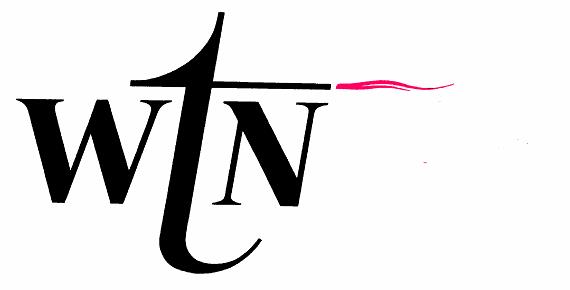
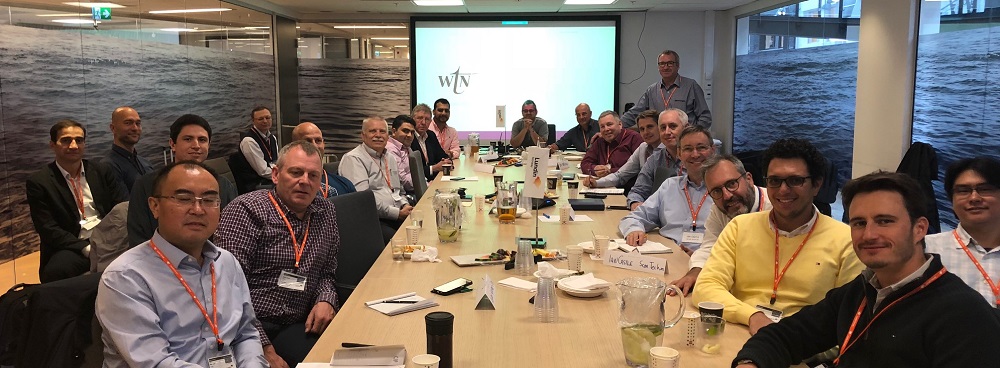
Piers (10th from left) at the Welltesting network event in Norway
OPC have recently undertaken some well testing support work for a client in Norway on an asset in the Norwegian North Sea. Piers said:
I was very pleased to be invited to present to the Welltesting Network in Norway. It actually was very timely as we had just completed a well test support project for a client based in Stavanger on an asset in the North Sea and I was able to use this project as one of the examples I shared with the group. We are receiving an increased interest from clients based in Norway and I look forward to returning to Oslo and Stavanger very soon.
Piers attended as a guest and presented on two topics that were of key interest to the members of the network:
- Alternative interference testing methods
- Horizontal well test interpretation
We are grateful to Mike Ward, technical facilitator of the network, for his feedback on the presentations provided by Piers:
Interference testing
Piers gave a presentation on interference testing and how this approach can give really good data on the reservoir properties between two wells although there were caveats about signal strength and ability to resolve data for meaningful well separations.
He showed the standard approach where an observation well is instrumented with one or more sets of pressure gauges and the producing well is flowed for a fixed period. Piers then showed some typical log plots of the producing and observation wells and explained the differences in the plot shapes. His plots were made with theoretical data and he explained how even this ideal data still created interpretation difficulties.
He then showed some synthetic data to explain the type curve matching technique that OPC have found effective when analysing real field data. The approach used was to evaluate each well performance using PTA modeling separately and look for consistency between the data sets as a very significant portion of each data set is affected by the common formation between the wells.
Piers also indicated an increasing trend of incrementing exploration wells ahead of appraisal wells being drilled. New systems are now available that could see a well effectively abandoned but instrumented with a pressure gauge that may deliver data for up to five years or more. Clearly there are fewer challenges for on shore-based systems but technology exists for offshore systems and has already been used a lot. Such abandonments can in some cases collect post test data on the abandoned well that is directly useful in extending the radius of investigation and the confidence in the reservoir properties away from the well when data quality allows ( this is not always a given).
Many audience members indicated they have done this and some have working systems now in abandoned wells. The technology improvements have helped make this a viable approach that appears to be considered and used more and more.
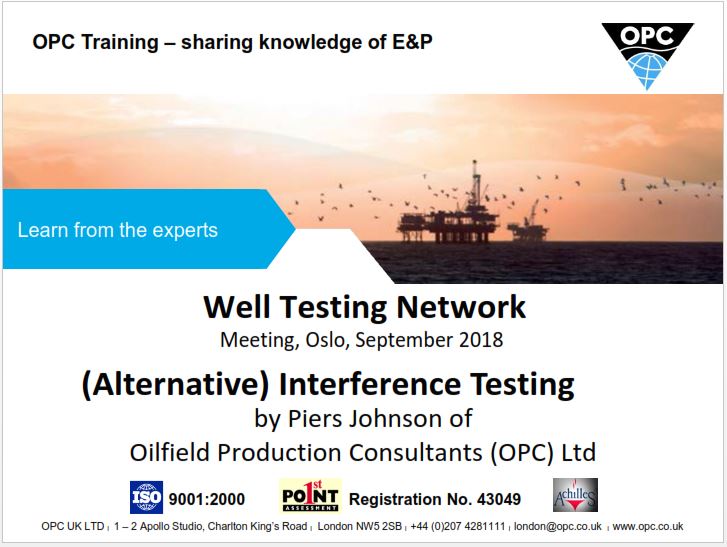
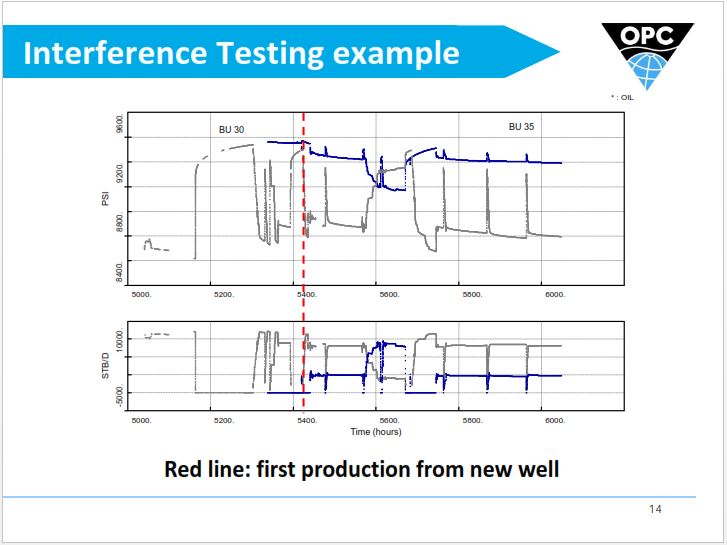
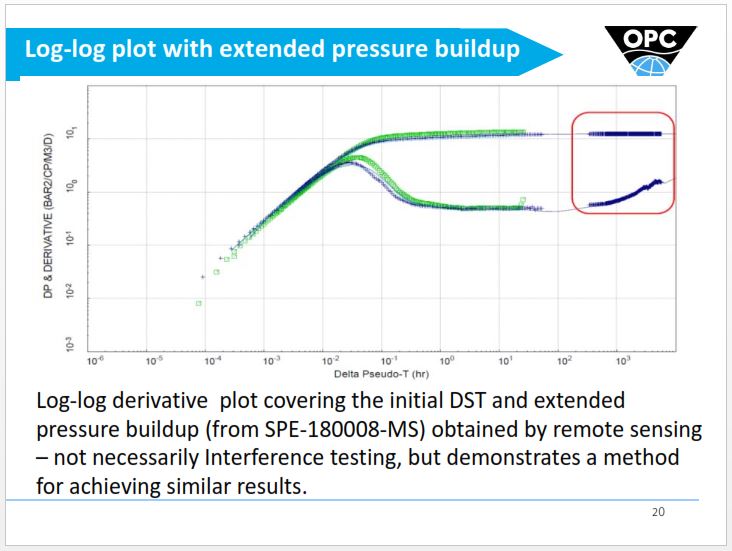
Complete form below to see a full set of slides
Horizontal well responses
Piers gave a second presentation with to explain some of the basic responses seen in horizontal well data. He showed some synthetic data to explain some effects he has seen in real wells and made the observation that these well tests are very difficult to truly evaluate because of the greater complexity of the system under test. In these wells we may know the bore length but knowing how much of that bore is flowing is critical to the evaluation and it is often not evaluated because of the difficulties and risks involved in attempting to log the well.
A number of different simulations on sensitivities were shown but only on a few key parameters. The complexities of possible flow regimes within a horizontal well is a function of the reservoir formations encountered and it is critical to collect as much static data a possible and to integrate this with the expected understanding of the reservoir to test hypotheses as there are nearly always too many different solutions to a horizontal well test analysis. Whilst there are key indicators for some parameters it is often not possible to be sure of the major effects in the well. Often well productive length and position is a major factor and trying to get information on this can prove very beneficial. At all cases looking at all sources of information is critical and building these into the analysis is needed to best understand the possible reservoir performance seen in the well.
One point made in the questions and discussions was that horizontal wells are often not drilled for reservoir appraisal data and perhaps extensive logging and evaluation may not always be achieved. They are often more associated with proof of concept for development productivity and achieving a base case productivity may be a key objective. In these cases a good productivity well above a minimum threshold may be the primary objective and this may be sufficient to support a development approach.
Other operators endorsed the comments relating to interpretation complexity and were quick to highlight the need for more data to help provide any consistent meaningful evaluation
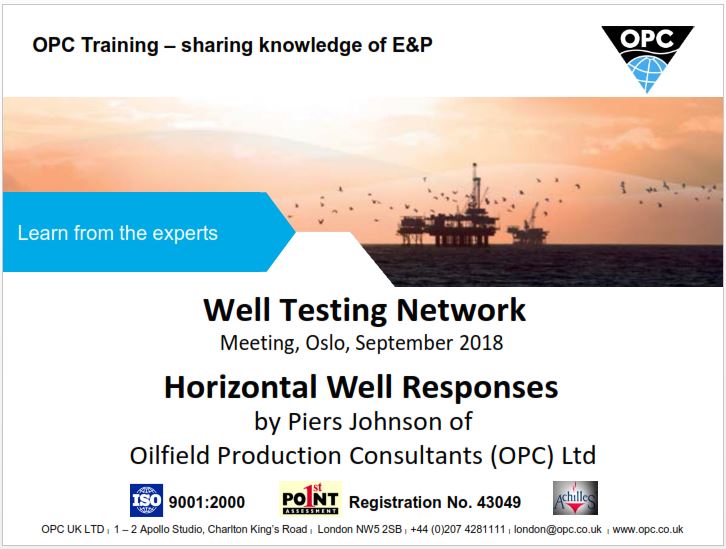
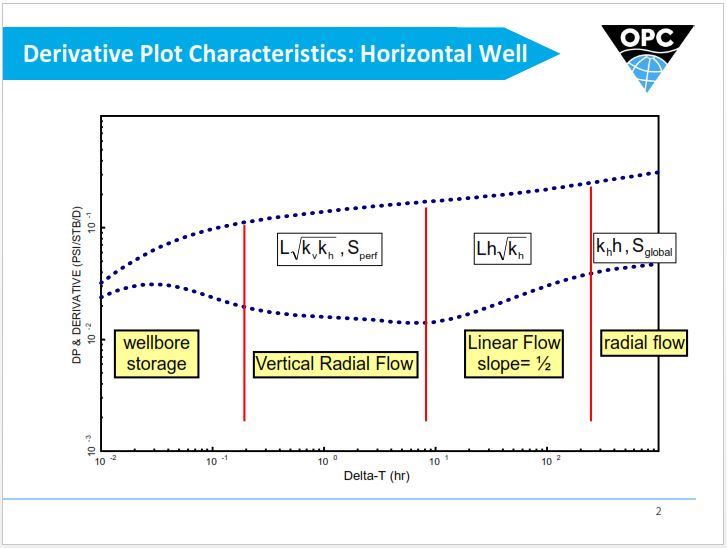
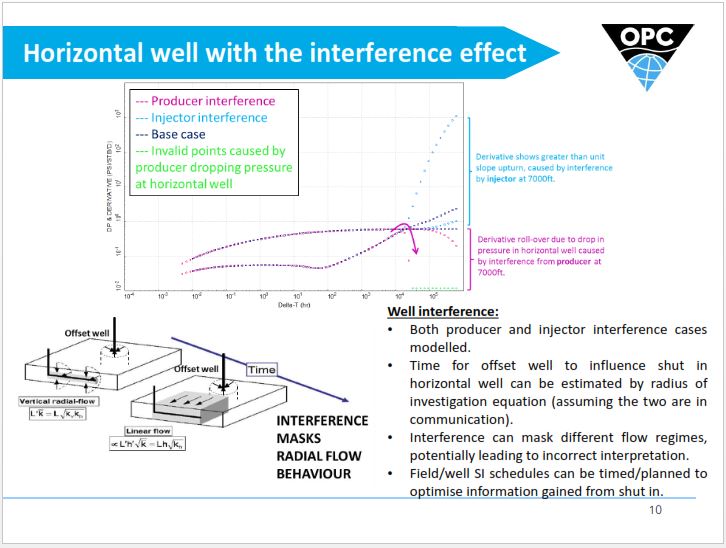
Complete form below to see a full set of slides
Both presentations were positively received by attendees. We are grateful to Fiona Curley of Win Cubed Ltd, organiser of the well testing network, for this piece of feedback:
OPC are our ‘go-to’ company whenever we need data and analysis technical input for our Welltesting Network meetings. Their wealth of knowledge and experience is invaluable; we have yet to find a well test interpretation topic that Piers and Bill haven’t been able to expertly present to WTN members.
For more details, please see our dedicated page on our Well testing services.
If you are organising an event and would like an expert presenter on well testing, please contact Piers Johnson on +44 20 7428 1111.
